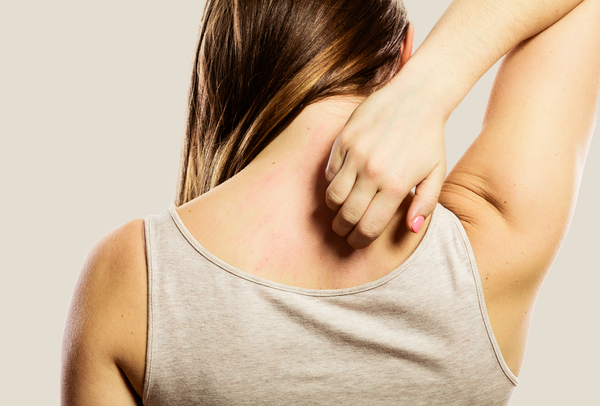We talked about the potential effects that hair dye could have on our health a while back—and we’re here with an update. A few weeks ago, the Environmental Working Group (EWG) chimed in, reiterating much of the scientific information circulating about the possible dangers of hair dye. The EWG also provides tips and pointers for being your own safety advocate.
If you’re unfamiliar with the Environmental Working Group, this watchdog organization has played a role in the “clean” movement by raising awareness about the potential side effects on many common ingredients. The EWG goes well beyond personal-care products by focusing on household products, agricultural practices, and providing consumers with information that allows them to take (at least) some control over their chemical exposure.
Must-know info
Permanent hair dyes are more chemically complex than temporary and semi-permanent dyes–which is why permanent hair-color products are of most concern. When their ingredients are combined during the coloring process, it’s possible that new, potentially harmful compounds can form.[1]
Potential health concerns related to hair dye
Permanent hair dyes were first introduced in the late 1800s, but their use became widespread in the 1970s.[2] The FDA has overseen cosmetic product safety since its formation in 1906. What is now known as the Personal Care Products Council (PCPC) established the Cosmetic Ingredient Review (CIR) program in 1976 to serve as an independent oversight organization.[3]
The question of hair-dye safety isn’t a new one. The FDA issued its first warning against several hair-dye ingredients in 1980, specifically stating that they penetrated human skin and caused cancer in lab animals. As a result, hair formulations changed—but many replacements for these banned ingredients as well as new ingredients can have similar chemical characteristics.[4]
The EWG provides evidence that the frequent use of hair dye has been associated with a higher risk of several cancers, including uterine and breast cancer as well as the formation of ovarian tumors.[5] Other studies have found a connection between hair-dye use and hormonal disruption.[6] An EWG published its own report that hair products (including dyes and relaxers) marketed to Black women tend to be formulated with more dangerous ingredients.
Hair dye is also a common cause of skin rashes and reactions because of ingredients that are known irritants and allergens. When ingredients within a hair dye react with each other as mentioned above, this can also pose a potential problem for the skin.
Although consumers tend to be the focus of any type of product safety, in the case of hair dye, professional hairstylists may be at a significantly higher risk of negative health effects—as well as the skin side effects mentioned above.[7] An analysis of 42 studies showed that the longer a person works with hair color the more likely they are to develop bladder cancer.[8]
The suspect ingredients
According the EWG and additional published research, the most hazardous ingredients in hair dye and their potential health concerns are:
- P-phenylenediamine (PPD): Skin irritation, skin sensitization, cancer, environmental toxicity
- Methylchloroisothiazolinone/methylisothiazolinone: Skin irritation, skin sensitization, brain toxicity
- Imidazolidinylurea, DMDM hydantoin, and other formaldehyde-releasing preservatives: Skin irritation, skin sensitization, cancer
- M-aminophenol: Skin irritation, skin sensitization, endocrine disruption, cancer, environmental toxicity
- Fragrance: Allergies, dermatitis, respiratory symptoms, reproductive harm
Making safer hair-dye choices
The decision to color or not to color is yours alone. (There are plenty of other chemicals and environmental hazards to worry about.) If you continue to color, the EWG has a few suggestions.
- Read ingredient labels and avoid products that contain any of the chemicals mentioned above.
- Wear gloves when applying color.
- Professionals should wear a face mask or apply dye in a well-ventilated area to reduce respiratory symptoms.
- Do a patch test by placing dye on a small patch of skin (such as on your arm) to see if it causes a reaction.
- Make sure you wash thoroughly and rinse well to remove all dye from the hair and skin.
- Don’t apply hair dye to a broken scalp.
SEEN may not offer hair color (although we have received a handful of requests from customers!), but we are all about safe, clean, effective, vegan, and cruelty-free hair and skincare products for all types of skin, including sensitive and acne-prone.
All SEEN products are formulated with skin-friendly ingredients that minimize the risk of skin allergies, irritation, and breakouts while respecting the skin barrier and following testing protocols that are often reserved for skincare. Our entire line is also phthalate-free, so you don’t have to worry about our fragrance if you prefer a fresh scent.
When you experience the hair and skin results you get from SEEN at home, you’ll want to bring your own to the salon, whether for a blowout, cut, color, or all the above! (Remember, SEEN Minis love to travel!)
[1] https://www.ncbi.nlm.nih.gov/pmc/articles/PMC9214764/
[2] https://www.ncbi.nlm.nih.gov/pmc/articles/PMC9214764/
[3] https://www.ncbi.nlm.nih.gov/pmc/articles/PMC3543291/
[4] https://www.ncbi.nlm.nih.gov/pmc/articles/PMC3543291/
[5] https://pubmed.ncbi.nlm.nih.gov/38364603/
[6] https://pubmed.ncbi.nlm.nih.gov/38364603/
[7] https://onlinelibrary.wiley.com/doi/10.1111/cod.14363
[8] https://pubmed.ncbi.nlm.nih.gov/20447989/




